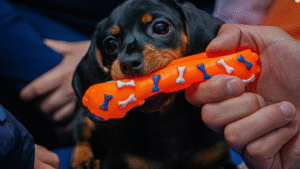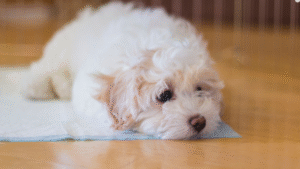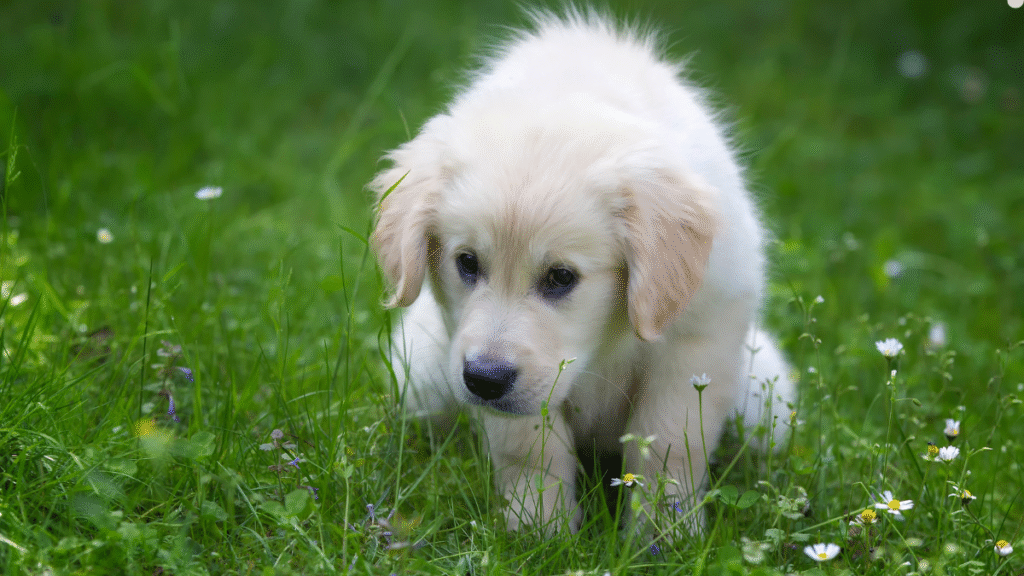It’s easy to imagine that bringing home a new puppy is one of life’s greatest joys. Those precious little faces, their boundless energy, and their sweet, affectionate personalities have an instant melt-your-heart effect on anyone.
But with that joy comes a challenge that every dog parent will face sooner or later—potty training.
Housebreaking a puppy can be frustrating if you don’t know where to start, but it doesn’t have to be. With a bit of patience, consistency, and the right approach, you can potty train your puppy quickly without resorting to punishment or stress.

The Importance of Potty Training
Before we get into the practical steps, let’s talk about why potty training is so important. It’s not just about keeping your floors clean and avoiding the hassle of constant cleanups—though that’s certainly a big part of it.
Dogs are naturally clean animals, and with the right guidance, they can learn to go to the bathroom in appropriate places. Potty training also helps your puppy understand boundaries. By the end of the process, your little pup will be calmer, happier, and more confident.
Behavioral issues such as anxiety, excessive barking, or territory marking are often prevented through early and proper potty training.
The key to fast potty training is to help your puppy associate one specific place with going to the bathroom. Once they make that connection, it becomes second nature.
Step 1: Create a Routine
Consistency is the number one secret to successful puppy potty training. Puppies need structure, and the sooner you create a set schedule, the quicker your puppy will learn.
Here’s an example routine for 8–12-week-old puppies:
-
Immediately after waking up in the morning
-
Within 5–15 minutes after meals or drinks
-
After any playtime or exciting activity
-
Right before bedtime
-
Every 1–2 hours throughout the day
You’ll need to take your puppy out frequently during the early weeks because they can’t hold their bladder for long.
As your puppy grows and gains better bladder control, you can gradually increase the time between potty breaks.
Step 2: Pick a Potty Spot
Choose one specific outdoor spot for your puppy to use. They’ll learn to associate that place with going to the bathroom because of the familiar scent.
Come up with a consistent cue such as “Go potty” or “Do your business,” and use that phrase every time you take your puppy to the spot.
Avoid changing the location frequently, as it can confuse your puppy. Eventually, they’ll associate the cue, the place, and the desired action.
If you live in an apartment or don’t have easy outdoor access, use puppy pee pads or a grass pad placed on a balcony as a temporary solution.
Step 3: Put Crate Training to Work
Crate training is one of the most effective and humane ways to housebreak a puppy quickly. When done correctly, your puppy’s crate becomes their safe space—not a punishment.
Dogs instinctively avoid soiling the area where they sleep. By keeping your puppy in a crate that’s large enough for them to stand, turn around, and lie down comfortably, you encourage them to hold it until you take them outside.
Tips for crate training:
-
Take your puppy outside immediately after opening the crate.
-
Avoid leaving your puppy in the crate for more than 2–3 hours during the day (except overnight).
-
Keep the crate in an area where they can see and hear you to prevent feelings of isolation.
-
Never use the crate as punishment—it should always be a positive space.
Crate training not only aids in potty training but also helps with travel safety and reducing separation anxiety.

Step 4: Reward Good Behavior Immediately
Positive reinforcement is the most effective way to train your puppy. As soon as your puppy finishes going potty in the designated spot, reward them immediately with praise, a treat, or playtime.
Dogs learn through association, so timing is critical. If you wait too long, your puppy won’t understand what they’re being rewarded for.
Say something cheerful like “Good potty!” and offer a small treat. Over time, your puppy will learn that going to the potty area earns them rewards and makes you happy.
Step 5: Look for Signs and Learn Their Body Language
Puppies rarely have accidents without warning. They usually show certain signs before they need to go, such as:
-
Sniffing the ground or circling
-
Whining, pacing, or acting restless
-
Suddenly stopping play or activity
-
Heading toward the door (if they’ve made that connection)
When you see these signs, calmly take your puppy to their potty area right away. The more you observe and understand your puppy’s signals, the easier it becomes to prevent accidents before they happen.
Step 6: Manage Accidents Calmly
Accidents will happen—it’s part of the learning process. The one thing you should never do is lose your temper. Never yell, hit, or rub your puppy’s nose in their mess. That only teaches fear, not understanding.
If you catch your puppy in the act, interrupt them gently by saying “Oops!” or “Outside!” and take them to the potty area. If they finish there, praise them enthusiastically.
Afterward, clean the spot thoroughly with an enzymatic cleaner. Regular cleaners won’t completely remove the scent, and if any odor remains, your puppy will likely return to the same spot.
Step 7: Feed on a Schedule
Keep your puppy on a consistent feeding schedule instead of free-feeding (leaving food out all day). Free-feeding makes it difficult to predict when your puppy needs to go out and slows down the potty training process.
Feed your puppy the same amount at the same times each day—typically three meals for young puppies—and take them outside shortly after each meal. This will help regulate their digestive system and make potty times more predictable.
Step 8: Take a Leash Outside
When you first start potty training, always take your puppy outside on a leash—even in your own yard.
Puppies are easily distracted by smells, people, or noises. Walking your puppy on a leash to the designated potty area helps them focus on the task at hand.
Once they finish, release them to play as a reward.
Step 9: Be Patient and Stick to the Schedule
No puppy becomes fully potty trained overnight. Each dog learns at their own pace, depending on their age, breed, and personality. Smaller breeds often take longer because of their smaller bladders.
The key to potty training success is consistency and positive reinforcement. Follow your routine, stay patient, and celebrate progress along the way.
Step 10: Gradually Give Them More Freedom
Once your puppy has consistently gone potty in the correct place for at least two weeks without accidents, you can start giving them more freedom inside.
Start by allowing access to one room at a time—under supervision. If your puppy continues to succeed, gradually expand their access. If accidents occur, limit their area again and return to the basics for a few days.
Common Potty Training Mistakes to Avoid
Even well-intentioned owners can make mistakes that slow down progress. Avoid the following:
-
Inconsistent schedule: Skipping potty breaks confuses your puppy.
-
Punishing accidents: Creates fear instead of learning.
-
Not cleaning thoroughly: Leaves scent cues that encourage repeat accidents.
-
Expecting too much too soon: Puppies can’t hold their bladders for long.
-
Lack of supervision: Unsupervised puppies are bound to have accidents.
Avoid these pitfalls, and you’ll be well on your way to success.

Helpful Puppy Potty Training Tools
While your time and patience are the most valuable tools, a few items can make the process smoother:
-
Crate: Essential for building bladder control and providing a safe space.
-
Baby gate or exercise pen: Useful for limiting your puppy’s movement at night or when unsupervised.
-
Pee pads or grass pads: Ideal for apartments or bad weather.
-
Enzymatic cleaner: Removes odors completely so your puppy won’t return to the same spot.
-
Treat pouch: Keeps rewards handy for immediate reinforcement.
These tools can make your job as a dog parent much easier.
How Long Does Potty Training Take?
Most puppies can be mostly house-trained within 4–6 weeks of consistent effort, though full reliability may take a few months.
It’s completely normal to experience occasional setbacks. Puppies are still learning, and sometimes they just need a reminder or a return to the basics. The key is to stay calm, patient, and consistent.
Final Thoughts
You can potty train your puppy quickly—and without stress or punishment—by following the right approach. A combination of consistency, positive reinforcement, and patience is all you need.
Every puppy is different and learns at their own pace depending on age, size, breed, and personality. With a calm, structured, and understanding approach, you and your puppy will succeed.
Stick to a regular schedule, establish a dedicated potty spot, reward good behavior promptly, and handle accidents calmly. Before long, your puppy will start going to their potty area on their own—and your floors will stay clean.
- 5 Cheap Alternatives To Dog Training Equipment - November 12, 2025
- Homemade Calming Spray To Help Dogs During Training - November 12, 2025
- 7 DIY Dog Training Tools You Can Make From Household Items - November 12, 2025
